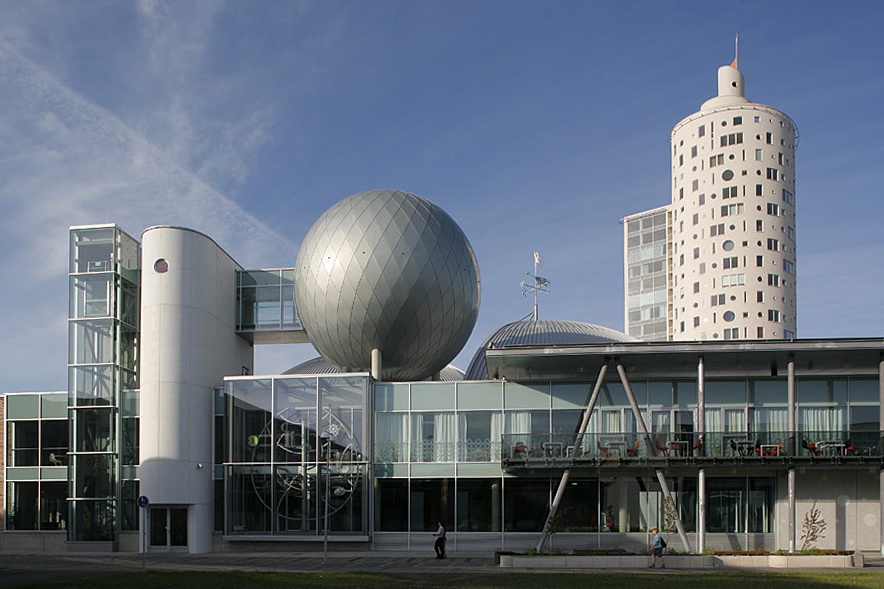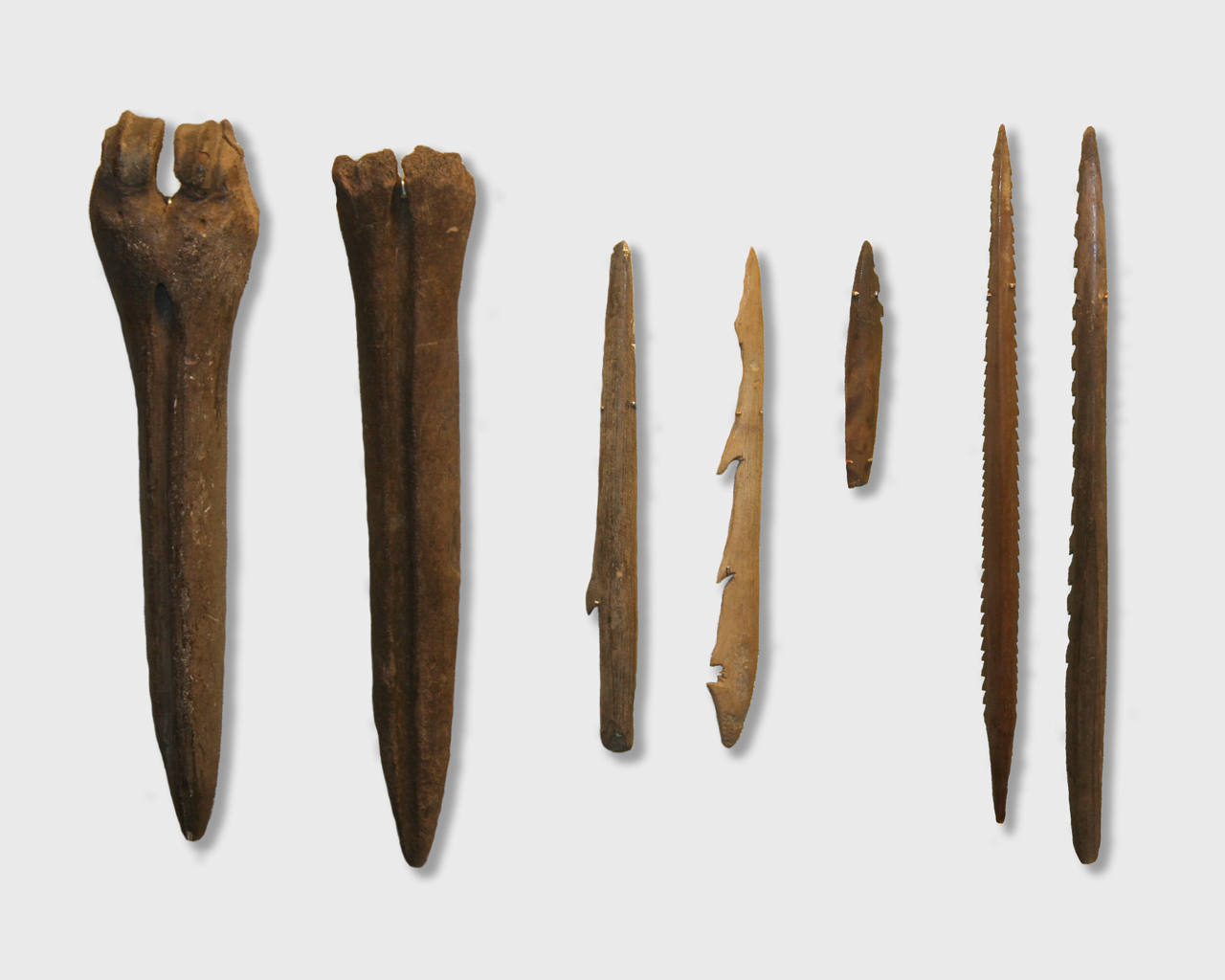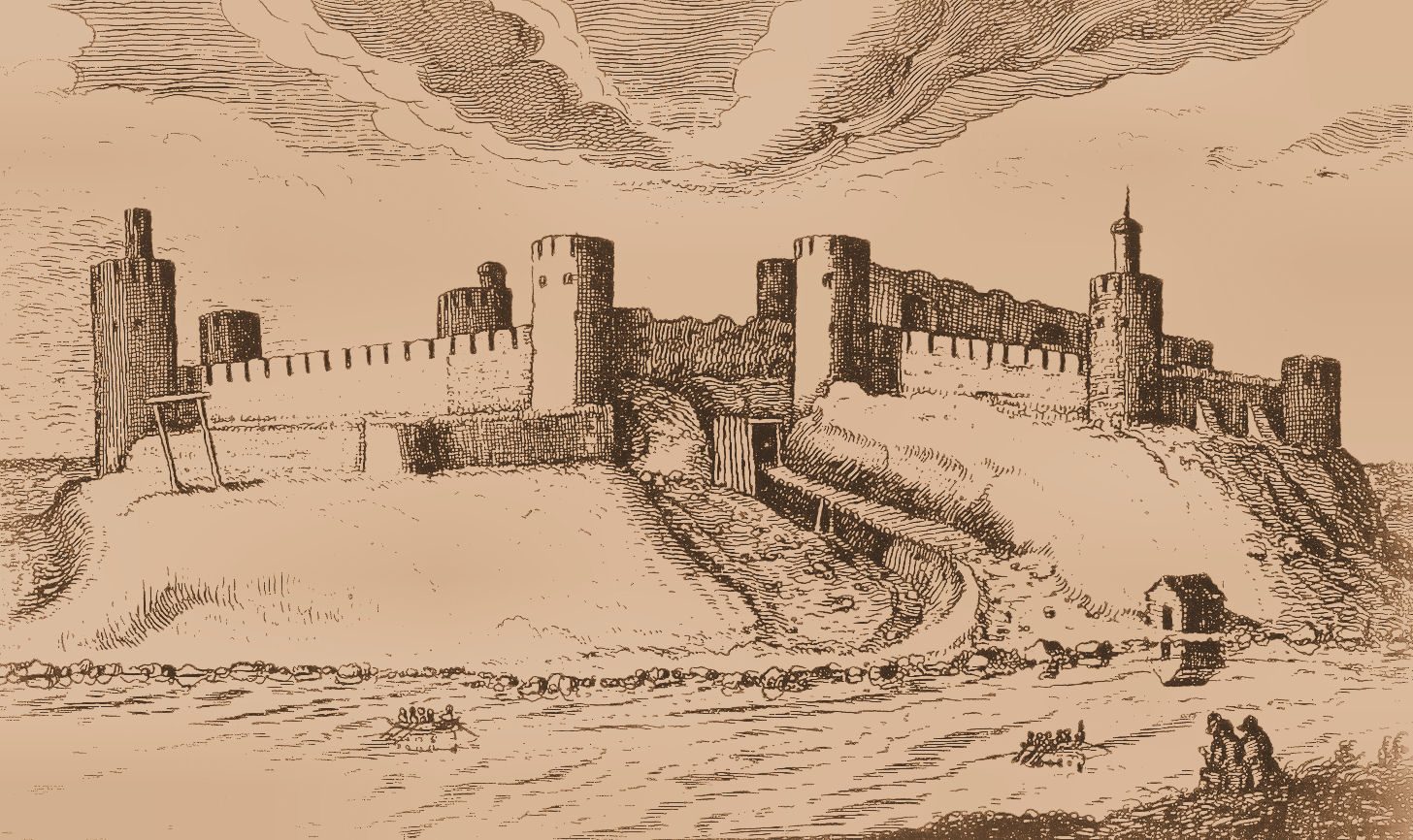|
Narva Castle
Hermann Castle ( et, Hermanni linnus, russian: –Ч–∞–Љ–Њ–Ї –У–µ—А–Љ–∞–љ; also known as Hermannsfeste, Herman Castle, Narva Castle (russian: –Э–∞ћБ—А–≤—Б–Ї–Є–є –Ј–∞ћБ–Љ–Њ–Ї), and Narva fortress) is a castle in Narva, eastern Estonia. It was founded in 1256 by the Danes and the first stone castle was built in the beginning of the 14th century. The German Livonian Order purchased the castle on 29 August 1346, and owned it for much of its history. Medieval fortifications Although the exact age of Narva Castle and the town still causes arguments between historians, they agree on the following sequence of events. Initially, the Danes, who had conquered Northern Estonia (see Danish Estonia) built a wooden border stronghold at the intersection of the Narva River and an old road circa the 13th century. Under the protection of the stronghold, the earlier settlement developed into the town of Narva, which obtained the L√Љbeck town rights in the first half of the 14th century. Follow ... [...More Info...] [...Related Items...] OR: [Wikipedia] [Google] [Baidu] |
Narva
Narva, russian: –Э–∞—А–≤–∞ is a municipality and city in Estonia. It is located in Ida-Viru County, Ida-Viru county, at the Extreme points of Estonia, eastern extreme point of Estonia, on the west bank of the Narva (river), Narva river which forms the EstoniaвАУRussia border, EstoniaвАУRussia international border. With 54,409 inhabitants (as of 2020) Narva is Estonia's third largest city after capital Tallinn and Tartu. In 1944, Narva was nearly completely destroyed during the battles of World War II. During the period of Soviet occupation of Estonia, Soviet occupation (1944вАУ1991), the cityвАЩs original native inhabitants were not permitted to return after the war, and immigrant workers from Russia and other parts of the Soviet Union, former USSR were brought in to populate the city. The city whose population had been, as of 1934 census, 65% ethnic Estonian, became overwhelmingly non-Estonian in the second half of the 20th century. According to more recent data, 46.7% of th ... [...More Info...] [...Related Items...] OR: [Wikipedia] [Google] [Baidu] |
Ivangorod Fortress
Ivangorod Fortress (russian: –Ш–≤–∞–љ–≥–Њ—А–Њ–і—Б–Ї–∞—П –Ї—А–µ–њ–Њ—Б—В—М, et, Jaanilinna linnus, vot, Jaanilidna) is a 15th century castle in Ivangorod, Leningrad Oblast, Russia. It is located on the east bank of the Narva river which currently forms the international border between Russia and Estonia, across from the Estonian city of Narva. Ivangorod Fortress was established during the reign of Ivan III in 1492, intended to reaffirm Muscovy's access to the Baltic Sea and to form a bulwark against the Teutonic Order, being built opposite the powerful Teutonic Hermann Castle. The fortress eventually grew into the town of Ivangorod, and the structures of the fort were gradually expanded and strengthened. Ivangorod Fortress was controlled by Sweden after the end of the Livonian War in 1583, changing hands numerous times during conflicts and border shifts over the following centuries. Following World War I, the fortress was used as a POW repatriation camp from 1920-21. After Wor ... [...More Info...] [...Related Items...] OR: [Wikipedia] [Google] [Baidu] |
1256 Establishments In Europe
1 (one, unit, unity) is a number representing a single or the only entity. 1 is also a numerical digit and represents a single unit of counting or measurement. For example, a line segment of ''unit length'' is a line segment of length 1. In conventions of sign where zero is considered neither positive nor negative, 1 is the first and smallest positive integer. It is also sometimes considered the first of the infinite sequence of natural numbers, followed by 2, although by other definitions 1 is the second natural number, following 0. The fundamental mathematical property of 1 is to be a multiplicative identity, meaning that any number multiplied by 1 equals the same number. Most if not all properties of 1 can be deduced from this. In advanced mathematics, a multiplicative identity is often denoted 1, even if it is not a number. 1 is by convention not considered a prime number; this was not universally accepted until the mid-20th century. Additionally, 1 is the ... [...More Info...] [...Related Items...] OR: [Wikipedia] [Google] [Baidu] |
Buildings And Structures In Ida-Viru County
A building, or edifice, is an enclosed structure with a roof and walls standing more or less permanently in one place, such as a house or factory (although there's also portable buildings). Buildings come in a variety of sizes, shapes, and functions, and have been adapted throughout history for a wide number of factors, from building materials available, to weather conditions, land prices, ground conditions, specific uses, prestige, and aesthetic reasons. To better understand the term ''building'' compare the list of nonbuilding structures. Buildings serve several societal needs вАУ primarily as shelter from weather, security, living space, privacy, to store belongings, and to comfortably live and work. A building as a shelter represents a physical division of the human habitat (a place of comfort and safety) and the ''outside'' (a place that at times may be harsh and harmful). Ever since the first cave paintings, buildings have also become objects or canvasses of much artistic ... [...More Info...] [...Related Items...] OR: [Wikipedia] [Google] [Baidu] |
Castles Of The Livonian Order
A castle is a type of fortified structure built during the Middle Ages predominantly by the nobility or royalty and by military orders. Scholars debate the scope of the word ''castle'', but usually consider it to be the private fortified residence of a lord or noble. This is distinct from a palace, which is not fortified; from a fortress, which was not always a residence for royalty or nobility; from a ''pleasance'' which was a walled-in residence for nobility, but not adequately fortified; and from a fortified settlement, which was a public defence вАУ though there are many similarities among these types of construction. Use of the term has varied over time and has also been applied to structures such as hill forts and 19th-20th century homes built to resemble castles. Over the approximately 900 years when genuine castles were built, they took on a great many forms with many different features, although some, such as curtain walls, arrowslits, and portcullises, were ... [...More Info...] [...Related Items...] OR: [Wikipedia] [Google] [Baidu] |
Museums In Estonia ...
This is a list of museums (including art museums or art galleries) in Estonia. See also *List of museums References External links {{europe topic, List of museums in Museums List Estonia Museums Museums Estonia Estonia, formally the Republic of Estonia, is a country by the Baltic Sea in Northern Europe. It is bordered to the north by the Gulf of Finland across from Finland, to the west by the sea across from Sweden, to the south by Latvia, a ... [...More Info...] [...Related Items...] OR: [Wikipedia] [Google] [Baidu] |
Castles In Estonia ...
This is a list of castles in Estonia. This list does not include palaces and manor houses, which are listed in a separate article. Castles of the Teutonic Order Castles of the Bishopric of Dorpat Castles of the Bishopric of √Цsel-Wiek Castles of the Bishopric of Reval Other castles See also *List of castles *List of palaces and manor houses in Estonia *List of palaces and manor houses in Latvia {{Ch√Ґteaux * Estonia Castles Estonia Castles A castle is a type of fortified structure built during the Middle Ages predominantly by the nobility or royalty and by military orders. Scholars debate the scope of the word ''castle'', but usually consider it to be the private fortified ... [...More Info...] [...Related Items...] OR: [Wikipedia] [Google] [Baidu] |
Buildings And Structures In Narva
A building, or edifice, is an enclosed structure with a roof and walls standing more or less permanently in one place, such as a house or factory (although there's also portable buildings). Buildings come in a variety of sizes, shapes, and functions, and have been adapted throughout history for a wide number of factors, from building materials available, to weather conditions, land prices, ground conditions, specific uses, prestige, and aesthetic reasons. To better understand the term ''building'' compare the list of nonbuilding structures. Buildings serve several societal needs вАУ primarily as shelter from weather, security, living space, privacy, to store belongings, and to comfortably live and work. A building as a shelter represents a physical division of the human habitat (a place of comfort and safety) and the ''outside'' (a place that at times may be harsh and harmful). Ever since the first cave paintings, buildings have also become objects or canvasses of much artis ... [...More Info...] [...Related Items...] OR: [Wikipedia] [Google] [Baidu] |
List Of Castles In Estonia ...
This is a list of castles in Estonia. This list does not include palaces and manor houses, which are listed in a separate article. Castles of the Teutonic Order Castles of the Bishopric of Dorpat Castles of the Bishopric of √Цsel-Wiek Castles of the Bishopric of Reval Other castles See also *List of castles *List of palaces and manor houses in Estonia *List of palaces and manor houses in Latvia {{Ch√Ґteaux * Estonia Castles Estonia Castles A castle is a type of fortified structure built during the Middle Ages predominantly by the nobility or royalty and by military orders. Scholars debate the scope of the word ''castle'', but usually consider it to be the private fortified ... [...More Info...] [...Related Items...] OR: [Wikipedia] [Google] [Baidu] |
History Of Estonia
The history of Estonia forms a part of the history of Europe. Humans settled in the region of Estonia near the end of the last glacial era, beginning from around 8500 BC. Ancient Estonia: pre-history Mesolithic Period The region has been populated since the end of the Late Pleistocene glaciation, about 10,000 BC. The earliest traces of human settlement in Estonia are connected with the Kunda culture. The early mesolithic Pulli settlement is located by the Pärnu River. It has been dated to the beginning of the 9th millennium BC. The Kunda culture received its name from the ''Lammasmäe'' settlement site in northern Estonia, which dates from earlier than 8500 BC. Bone and stone artifacts similar to those found at Kunda have been discovered elsewhere in Estonia, as well as in Latvia, northern Lithuania and southern Finland. Among minerals, flint and quartz were used the most for making cutting tools. Neolithic Period The beginning of the Neolithic Period is marked by the ... [...More Info...] [...Related Items...] OR: [Wikipedia] [Google] [Baidu] |
Ivangorod Fortress Opposite The Narva Hermann Castle
Ivangorod ( rus, –Ш–≤–∞–љ–≥–ЊћБ—А–Њ–і, p=…™v…РnЋИ…°or…Щt; et, Jaanilinn; vot, Jaanilidna) is a town in Kingiseppsky District of Leningrad Oblast, Russia, located on the east bank of the Narva river which flows along the EstoniaвАУRussia international border, west of St. Petersburg. The town's population was recorded as Ivangorod is a major border crossing point and a railway station by the TallinnвАУ St. Petersburg line. It is located just opposite to the Estonian town of Narva. The town is the site of the Ivangorod Fortress, a prominent fortification monument of the 15th and the 16th centuries. History The fortress, established in 1492 during the reign of Ivan III of Moscow, took its name (literally: Ivan-town вАФ ''gorod'' in Russian means "town" or "city") from that of the Tsar. Between 1581 and 1590 and from 1612 to 1704, Sweden controlled the area. Ivangorod was granted town privileges and administered as a Russian township under the Swedish Empir ... [...More Info...] [...Related Items...] OR: [Wikipedia] [Google] [Baidu] |
Roundel (fortification)
The roundel is an artillery fortification with a rounded or circular plan of a similar height to the adjacent defensive walls. If the fortification is clearly higher than the walls it is called a battery tower. Design The design of a roundel, which was massive in comparison with a normal defensive tower, enabled the deployment of heavy cannon. Roundels were built of both earth and brickwork; in the latter case, vaulted rooms (casemates) were built on the inside. History Emergence Roundels appeared in the 15th century when cannon gradually developed into an effective siege weapon. Roundels are the oldest permanent artillery fortifications. Their heyday was in the 15th and early 16th centuries. Early examples of artillery roundels are in the town fortifications of T√°bor before 1433 and Sion Castle, that around 1426/27, and certainly before the siege of 1437 were modified. Other early central European examples that have survived include roundels at Sigmundskron Castle near ... [...More Info...] [...Related Items...] OR: [Wikipedia] [Google] [Baidu] |








